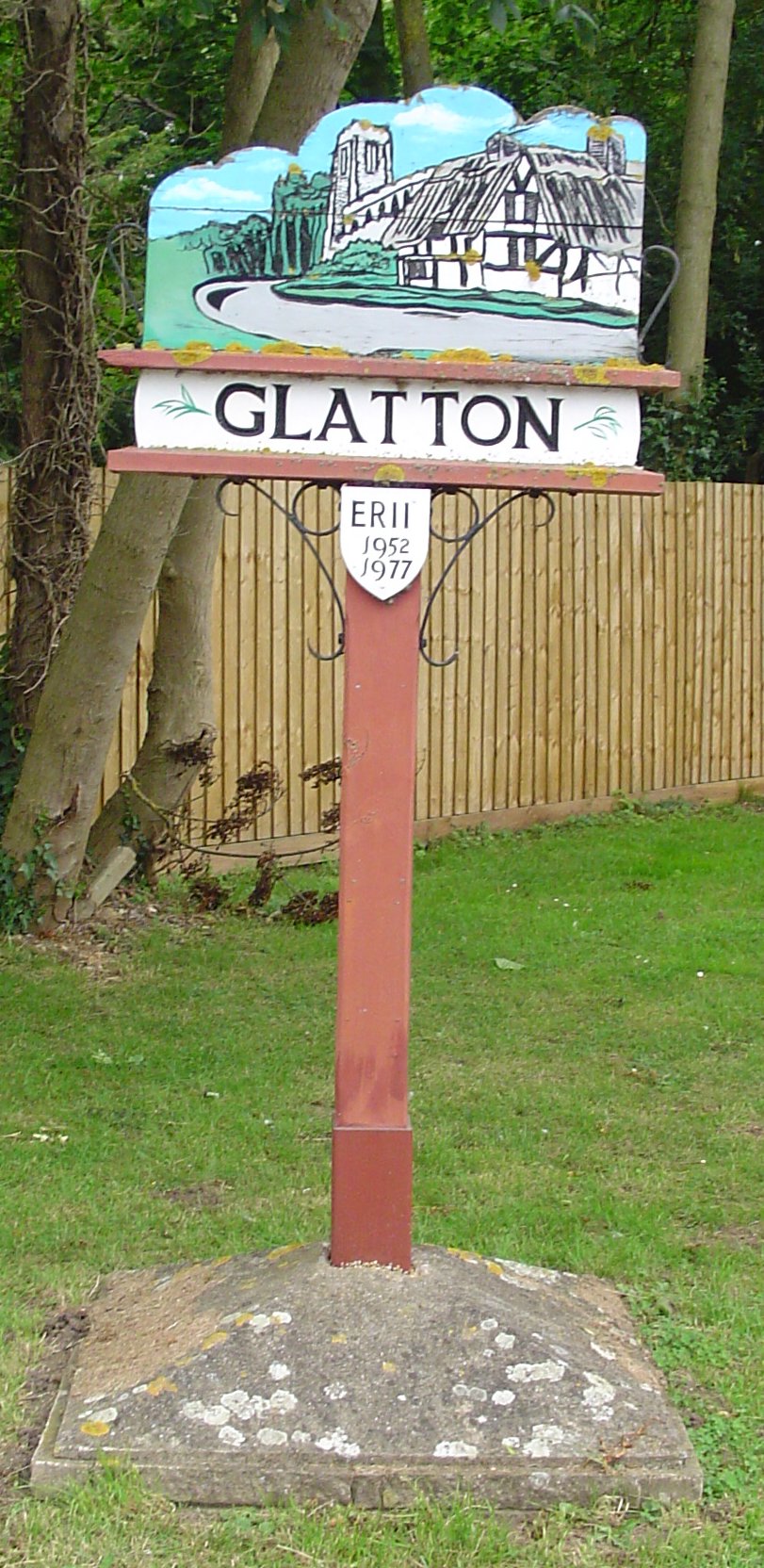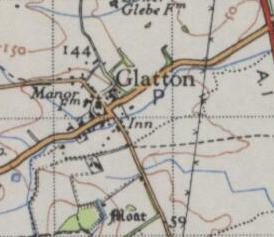Glatton on:
[Wikipedia]
[Google]
[Amazon]
 Glatton is a village and
Glatton is a village and
 In 1881 Glatton had a total population of 249.
In 1881 Glatton had a total population of 249.



www.glatton.org.uk
{{authority control Villages in Cambridgeshire Huntingdonshire Civil parishes in Cambridgeshire
 Glatton is a village and
Glatton is a village and civil parish
In England, a civil parish is a type of administrative parish used for local government. It is a territorial designation which is the lowest tier of local government below districts and counties, or their combined form, the unitary authorit ...
in Cambridgeshire
Cambridgeshire (abbreviated Cambs.) is a county in the East of England, bordering Lincolnshire to the north, Norfolk to the north-east, Suffolk to the east, Essex and Hertfordshire to the south, and Bedfordshire and Northamptonshire to the ...
, England, some south-west of Peterborough
Peterborough () is a cathedral city in Cambridgeshire, east of England. It is the largest part of the City of Peterborough unitary authority district (which covers a larger area than Peterborough itself). It was part of Northamptonshire until ...
, near the villages of Conington, Yaxley and Stilton
Stilton is a village and civil parish in Cambridgeshire, England, about north of Huntingdon in Huntingdonshire, which is a non-metropolitan district of Cambridgeshire as well as a historic county of England.
History
There is evidence of Neo ...
. It lies in the non-metropolitan district
Non-metropolitan districts, or colloquially "shire districts", are a type of Districts of England, local government district in England. As created, they are sub-divisions of non-metropolitan county, non-metropolitan counties (colloquially ''shi ...
of Huntingdonshire
Huntingdonshire (; abbreviated Hunts) is a non-metropolitan district of Cambridgeshire and a historic county of England. The district council is based in Huntingdon. Other towns include St Ives, Godmanchester, St Neots and Ramsey. The popu ...
, which is part of Cambridgeshire as well as being a historic county. A World War II airfield ( RAF Glatton) built nearby is now known as Peterborough's Conington Airport.
History
In 1085William the Conqueror
William I; ang, WillelmI (Bates ''William the Conqueror'' p. 33– 9 September 1087), usually known as William the Conqueror and sometimes William the Bastard, was the first House of Normandy, Norman List of English monarchs#House of Norman ...
ordered that a survey should be carried out across his kingdom to discover who owned which parts and what it was worth. The survey took place in 1086 and the results were recorded in what, since the 12th century, has become known as the Domesday Book
Domesday Book () – the Middle English spelling of "Doomsday Book" – is a manuscript record of the "Great Survey" of much of England and parts of Wales completed in 1086 by order of King William I, known as William the Conqueror. The manus ...
. Starting with the king himself, for each landholder within a county there is a list of their estates or manors; and, for each manor, there is a summary of the resources of the manor, the amount of annual rent that was collected by the lord of the manor both in 1066 and in 1086, together with the taxable value.
Glatton was listed in the Domesday Book in the Hundred
100 or one hundred (Roman numeral: C) is the natural number following 99 and preceding 101.
In medieval contexts, it may be described as the short hundred or five score in order to differentiate the English and Germanic use of "hundred" to des ...
of Normancross in Huntingdonshire; the name of the settlement was written as ''Glatune'' in the Domesday Book. In 1086 there was just one manor at Glatton; the annual rent paid to the lord of the manor in 1066 had been £10 and the rent was the same in 1086.
The Domesday Book does not explicitly detail the population of a place but it records that there was 35 households at Glatton. There is no consensus about the average size of a household at that time; estimates range from 3.5 to 5.0 people per household. Using these figures then an estimate of the population of Glatton in 1086 is that it was within the range of 122 and 175 people.
The Domesday Book uses a number of units of measure for areas of land that are now unfamiliar terms, such as hides and ploughland
The carucate or carrucate ( lat-med, carrūcāta or ) was a medieval unit of land area approximating the land a plough team of eight oxen could till in a single annual season. It was known by different regional names and fell under different forms ...
s. In different parts of the country, these were terms for the area of land that a team of eight oxen could plough in a single season and are equivalent to ; this was the amount of land that was considered to be sufficient to support a single family. By 1086, the hide had become a unit of tax assessment rather than an actual land area; a hide was the amount of land that could be assessed as £1 for tax purposes. The survey records that there were sixteen ploughlands at Glatton in 1086 and that there was the capacity for a further eight ploughlands. In addition to the arable land, there was of meadows and of woodland at Glatton.
The tax assessment in the Domesday Book was known as geld or danegeld and was a type of land-tax based on the hide or ploughland. It was originally a way of collecting a tribute to pay off the Danes when they attacked England, and was only levied when necessary. Following the Norman Conquest, the geld was used to raise money for the King and to pay for continental wars; by 1130, the geld was being collected annually. Having determined the value of a manor's land and other assets, a tax of so many shillings and pence per pound of value would be levied on the land holder. While this was typically two shillings in the pound the amount varied; for example, in 1084 it was as high as six shillings in the pound. For the manor at Glatton the total tax assessed was eight geld.
By 1086 there was already a church and a priest at Glatton.
In the 1870s, John Marius Wilson described the village as "GLATTON, a village and a parish in the district of Peterborough and county of Huntingdon. The village stands 3 miles SSW of Stilton
Stilton is a village and civil parish in Cambridgeshire, England, about north of Huntingdon in Huntingdonshire, which is a non-metropolitan district of Cambridgeshire as well as a historic county of England.
History
There is evidence of Neo ...
, and 3½ WSW of Holme r. station."
Government
As a civil parish, Glatton has a parish council, the lowest tier of government in England. It consists of five councillors and it has a parish clerk. It normally meets on a Wednesday, some 4–6 times a year. Glatton was in the historic andadministrative county
An administrative county was a first-level administrative division in England and Wales from 1888 to 1974, and in Ireland from 1899 until either 1973 (in Northern Ireland) or 2002 (in the Republic of Ireland). They are now abolished, although mos ...
of Huntingdonshire until 1965. From 1965, the village was part of the new administrative county of Huntingdon and Peterborough. Then in 1974, following the Local Government Act 1972, Glatton became a part of the county of Cambridgeshire.
The second tier of local government is the Huntingdonshire District Council
Huntingdonshire District Council is the local authority for the district of Huntingdonshire in Cambridgeshire, England. Based in Huntingdon, it forms the lower part of the two tier system of local government in the district, below Cambridgeshire ...
of Cambridgeshire, with its headquarters in Huntingdon. Its 52 councillors represent 29 district wards. Glatton is a part of the district ward of ''Sawtry'' and represented on the district council by two councillors. District councillors serve four-year terms.
For Glatton, the highest tier of local government is Cambridgeshire County Council
Cambridgeshire County Council is the county council of Cambridgeshire, England. The council consists of 61 councillors, representing 59 electoral divisions. The council is based at New Shire Hall at Alconbury Weald, near Huntingdon. It is a me ...
, based in Cambridge. It consists of 69 councillors representing 60 electoral divisions. Glatton is part of the electoral division of ''Sawtry and Ellington'' and represented by one county councillor. At Westminster Glatton is in the parliamentary constituency of North West Cambridgeshire, held by Shailesh Vara
Shailesh Lakhman Vara (born 4 September 1960) is a Ugandan-British politician, who served as Secretary of State for Northern Ireland from July to September 2022. A member of the Conservative Party, he has served as the Member of Parliament (MP) ...
(Conservative
Conservatism is a cultural, social, and political philosophy that seeks to promote and to preserve traditional institutions, practices, and values. The central tenets of conservatism may vary in relation to the culture and civilization in ...
) since 2005. The previous member was Brian Mawhinney (Conservative) between 1997 and 2005.
Demography
Population
In the period 1801 to 1901 the census population of Glatton ranged between 189 in 1901 and 358 in 1821. All population census figures from report ''Historic Census figures Cambridgeshire to 2011'' by ''Cambridgeshire Insight''. In 2011, the parish covered an area of , giving a population density in 2011 of 90.7 persons per square mile (35 per square kilometre). Of the 2011 population of 308, 35 were in the 0–19 cohort, 62 aged 20–44, 142 aged 45–74 and 79 over 75 years old. The structure is weighted to the older population; 72 per cent are above 45 years old. Census records show a decline until 1951, to 136, then a relatively swift rise.
Occupations
In 1881 there was a clear gender divide in occupations. Most men worked in agriculture (74 per cent), with a fairly even spread among other occupations. Most women had were of unknown occupation or worked in domestic services/ offices. In the 2011 census, both men and women had the highest levels of employment in associate professional and technical occupations, with a far greater number in management or as professionals. There was still some gender-specific employment, for example administrative and secretarial jobs employed more women (5:1) and the skilled trade sector more men (4:1). However, men and women appear more evenly across all occupations in the later census. Agricultural and domestic jobs, the commonest in 1881, were non-existent in 2011.

Education
There are no schools in Glatton. The closest is Stilton Church of England VC Primary School 1.8 miles (2.9 km) away. The closest secondary school is Sawtry Community College 2.1 miles (3.4 km) away.Landmarks
Among the listed buildings in Glatton are St Nicholas's Parish Church and the ''Addison Arms'', which won the Rural Pub of The Year award in Huntingdonshire in 2014.Transport
The A1 (M) is the closest motorway, about a mile to the east of Glatton parish. There is a railway line about 3 miles east of Glatton, but the closest station isPeterborough
Peterborough () is a cathedral city in Cambridgeshire, east of England. It is the largest part of the City of Peterborough unitary authority district (which covers a larger area than Peterborough itself). It was part of Northamptonshire until ...
, about 10 miles away.
Parish church
Glatton has a parish church dedicated to St Nicholas belonging to the Diocese of Ely. The church is mentioned in the 1086 Domesday Book, but none of that building remains. A notable feature of today's church is its tower, built about 1500. Its four bells bear the inscriptions 1) COMM COMM AND PREAY 1595, 2) SEARVE GOD AND OBEAY THY PRINCE 1595, 3) J.TAYLOR & CO FOUNDERS LOUGHBOROUGH 1863, and 4) OMNIA FAINT AD GLORIAM DEI SOLI THO. EAYRE 1736.References
External links
*Glatton Village Official websitwww.glatton.org.uk
{{authority control Villages in Cambridgeshire Huntingdonshire Civil parishes in Cambridgeshire